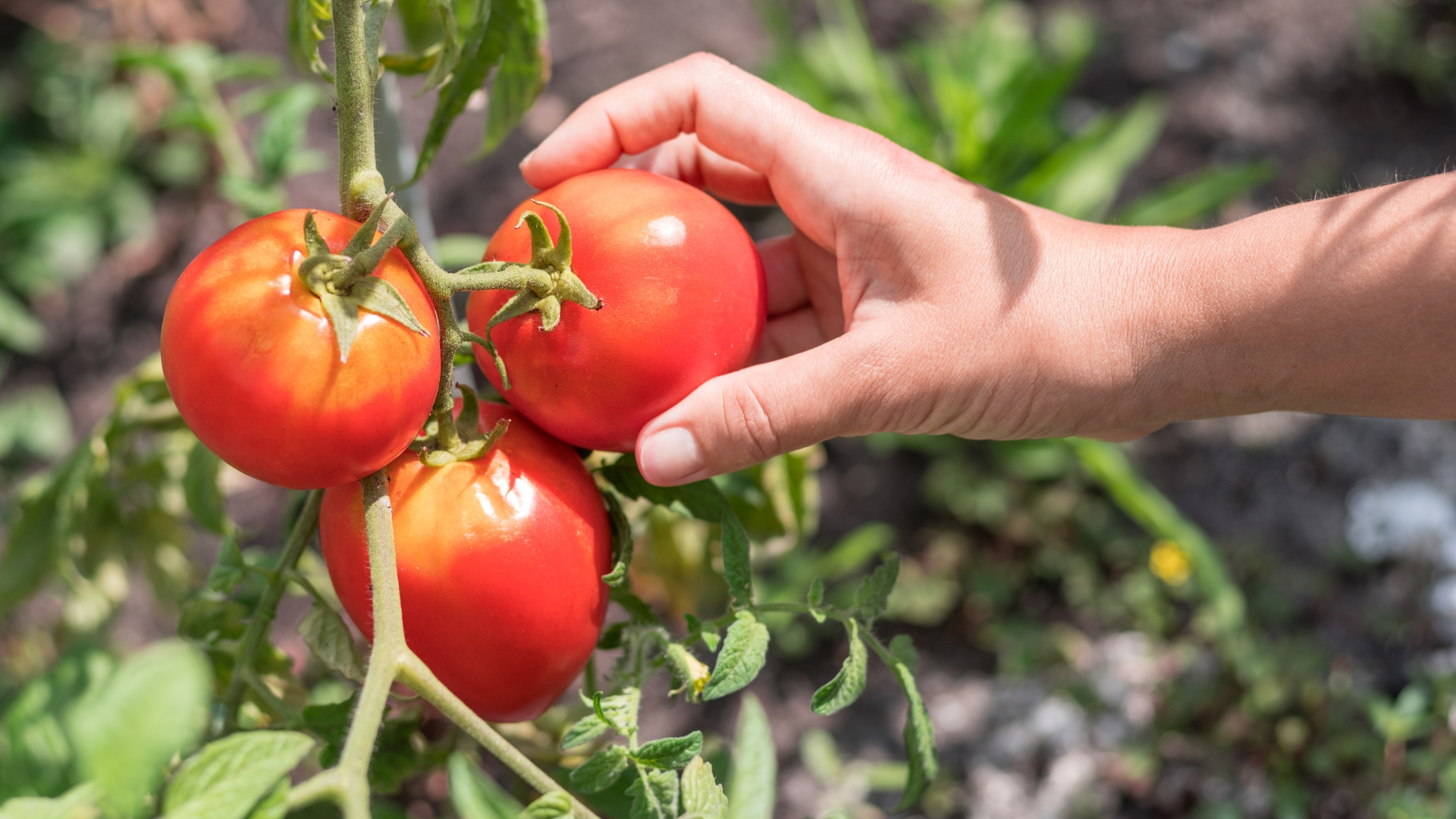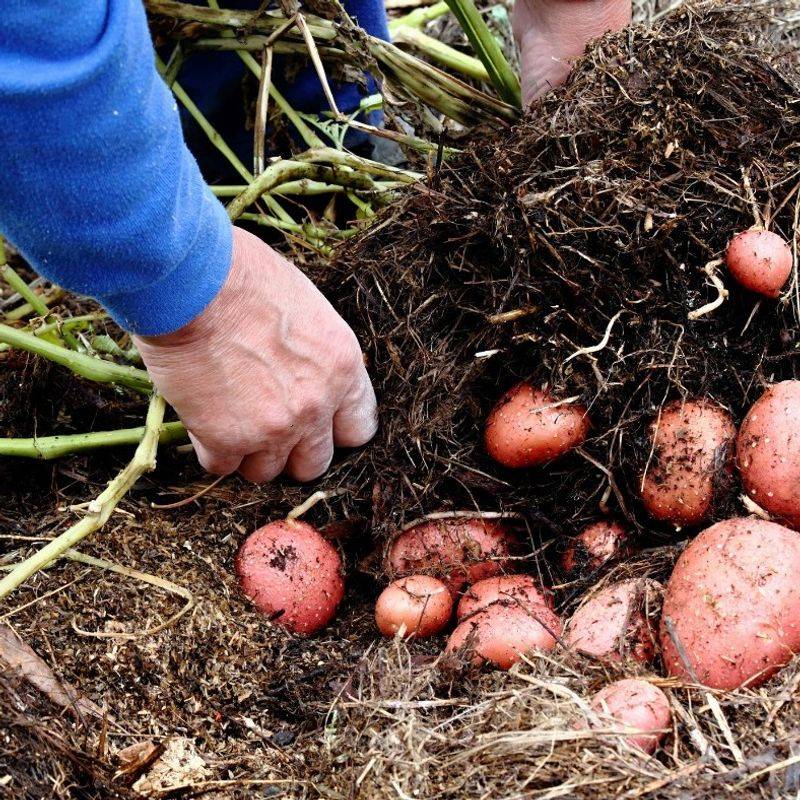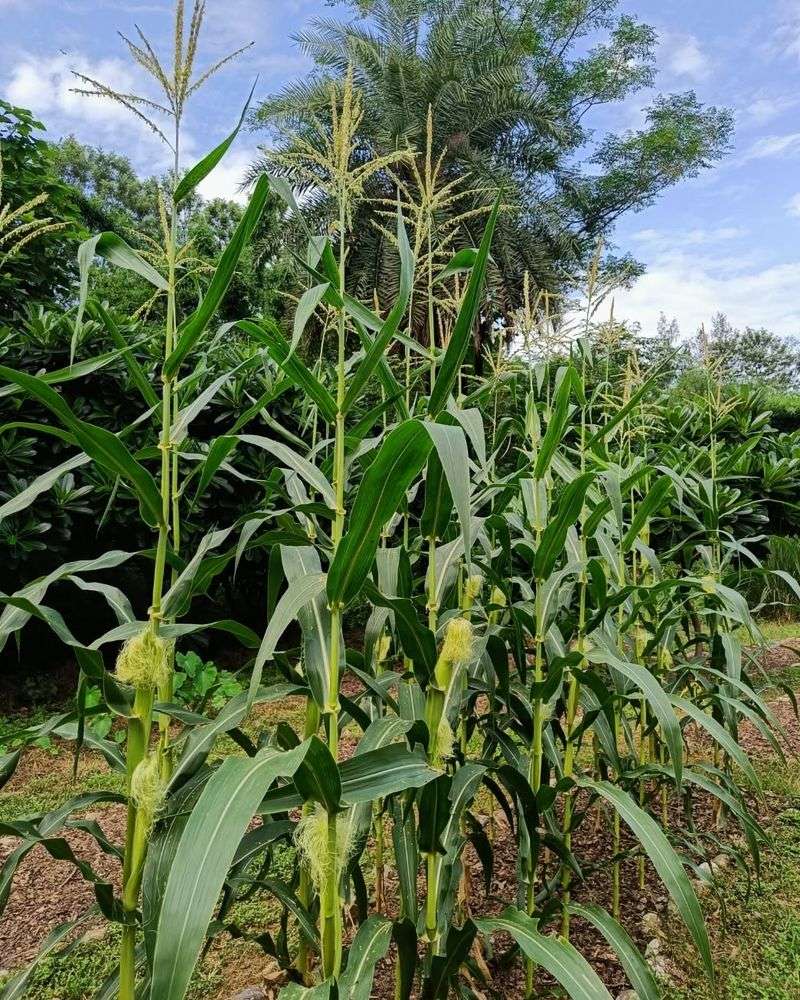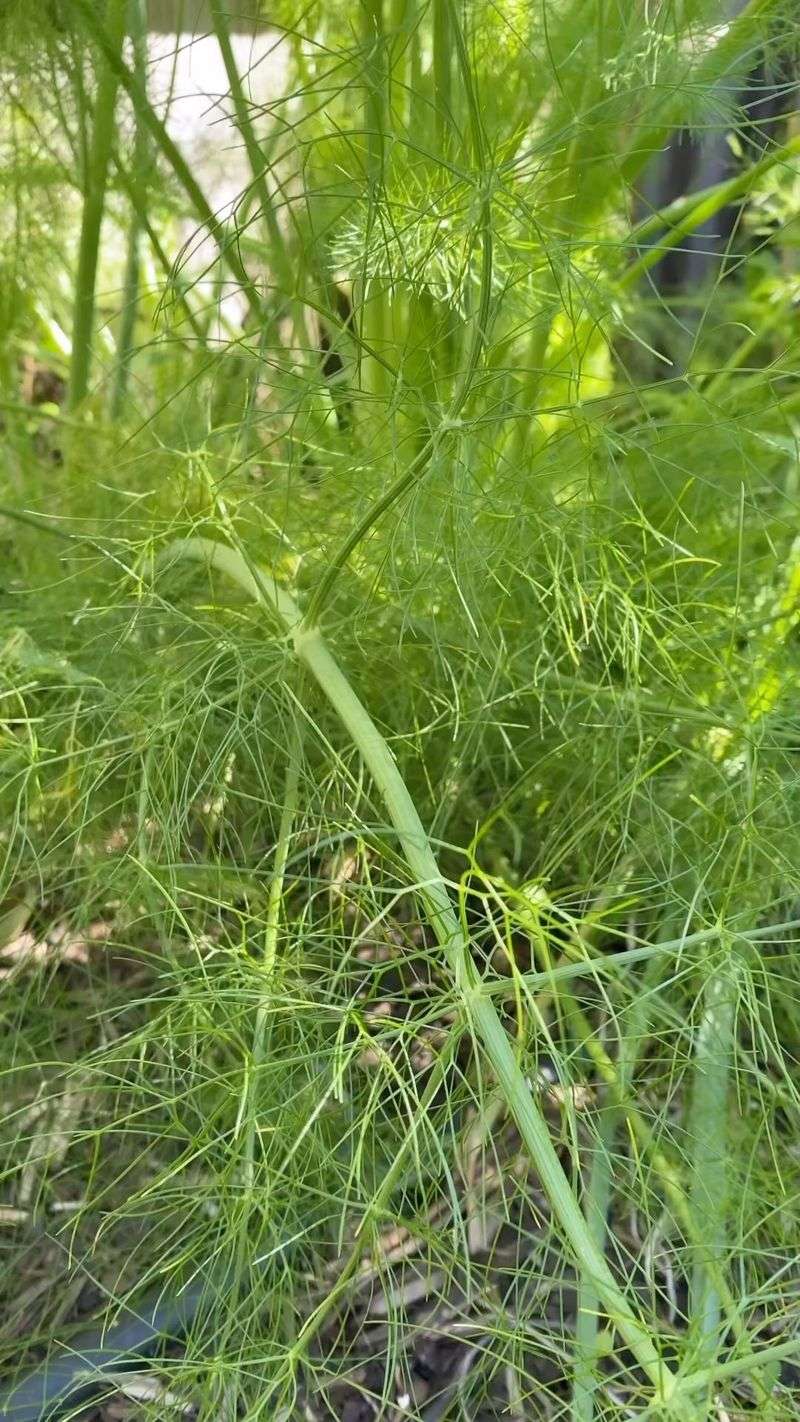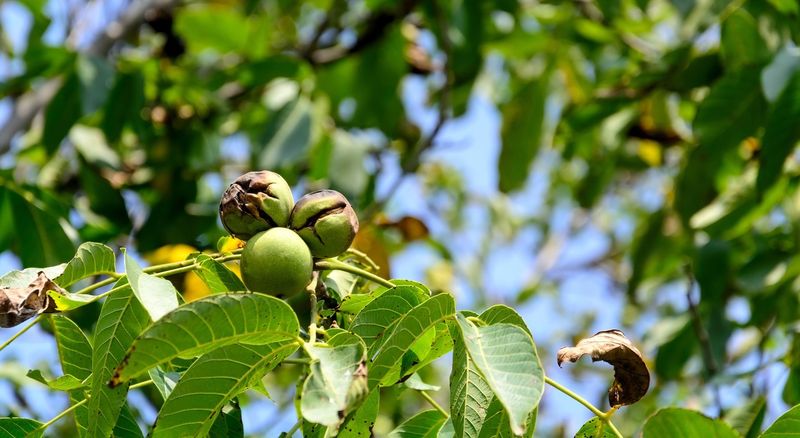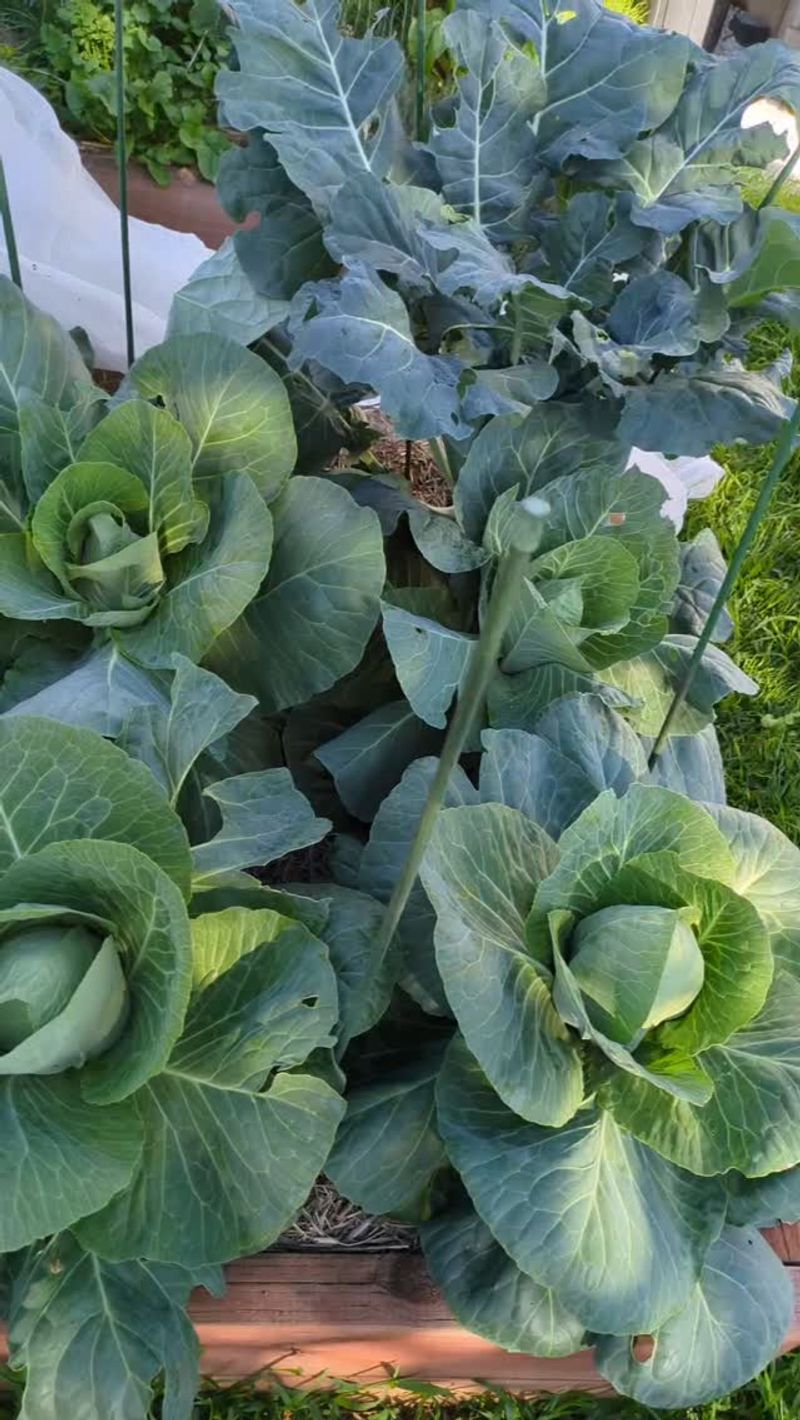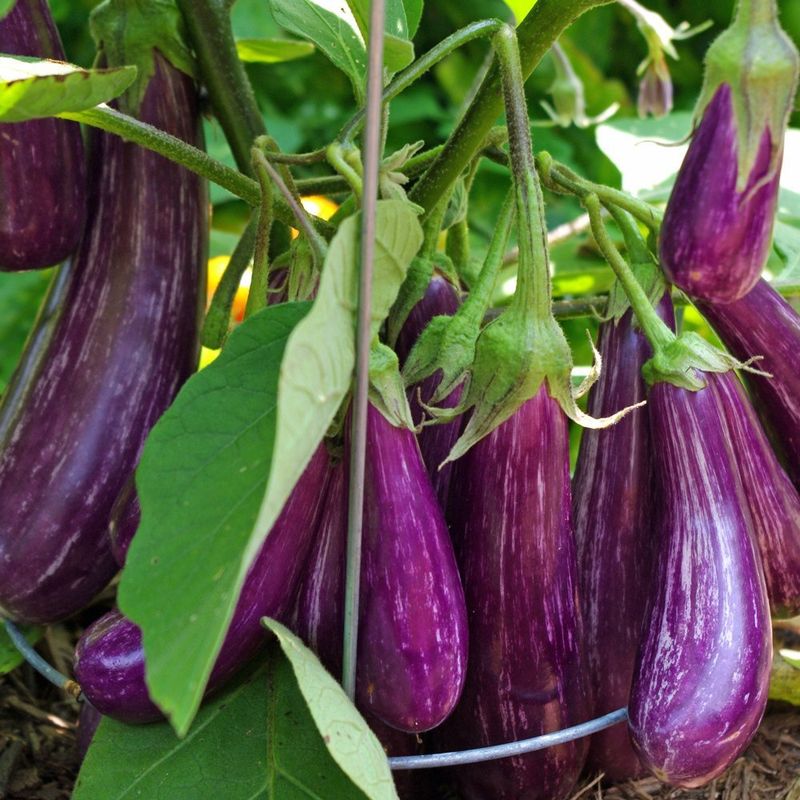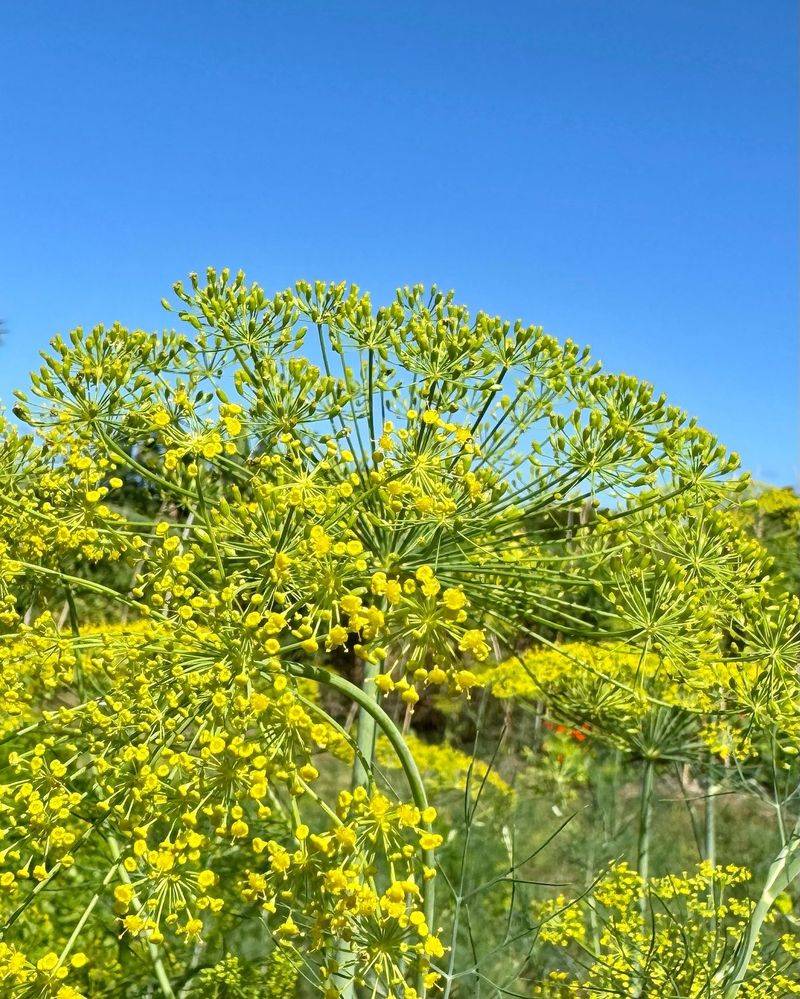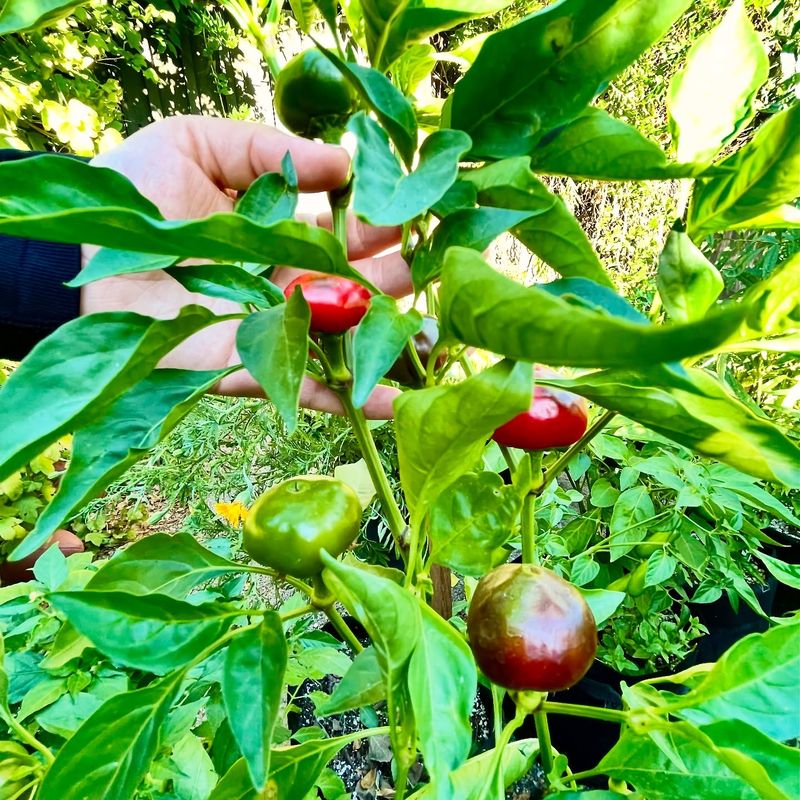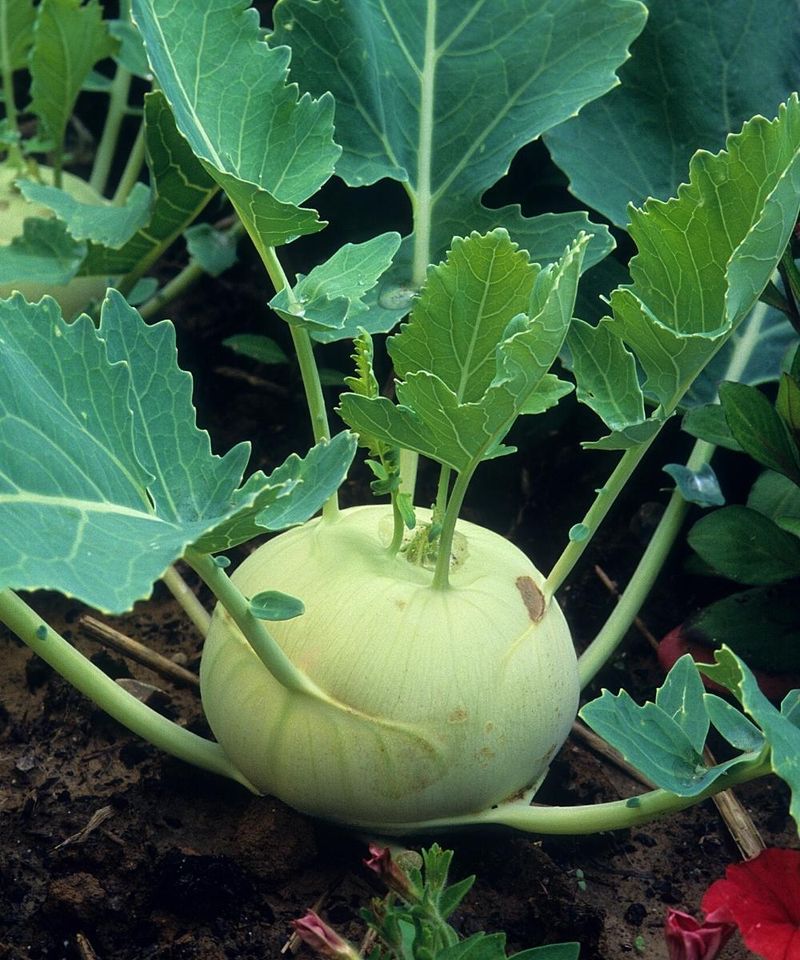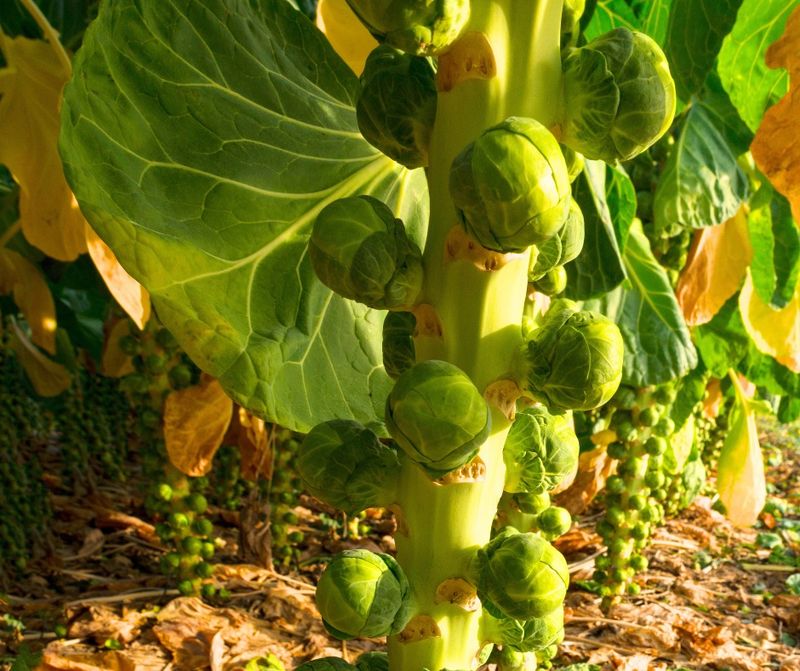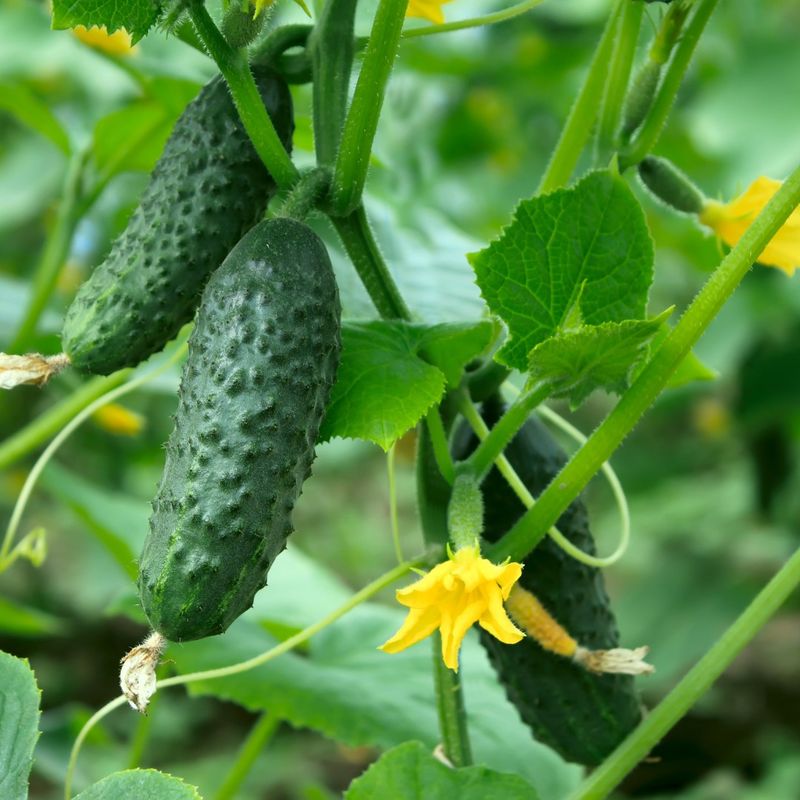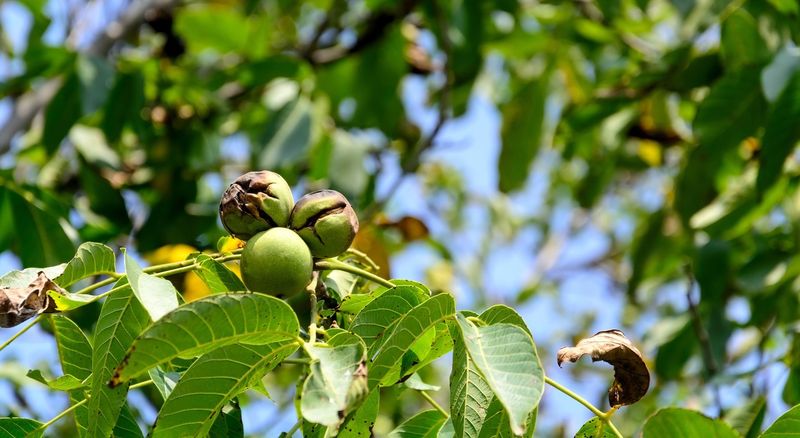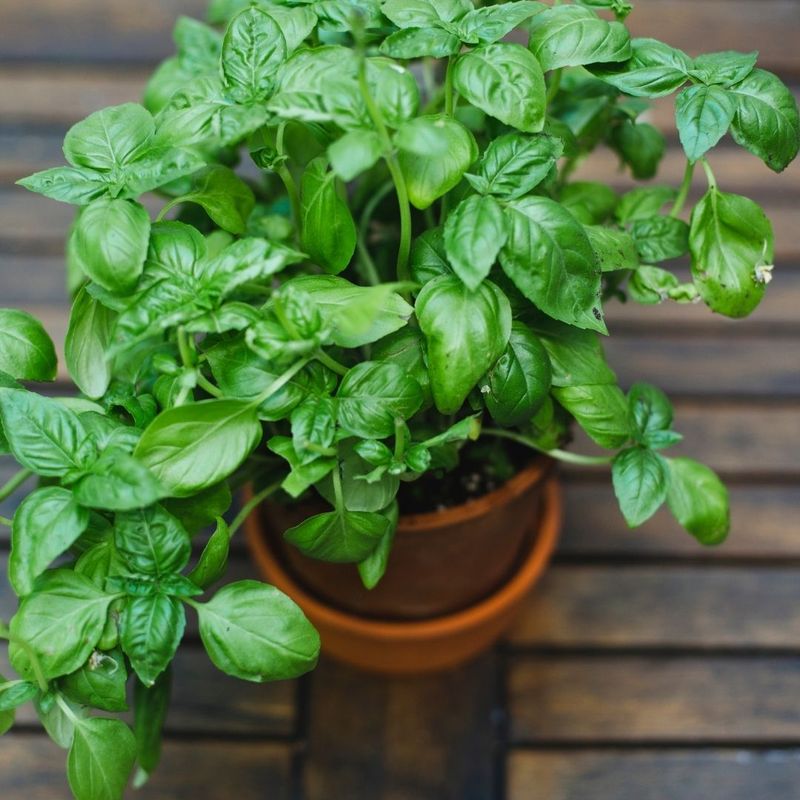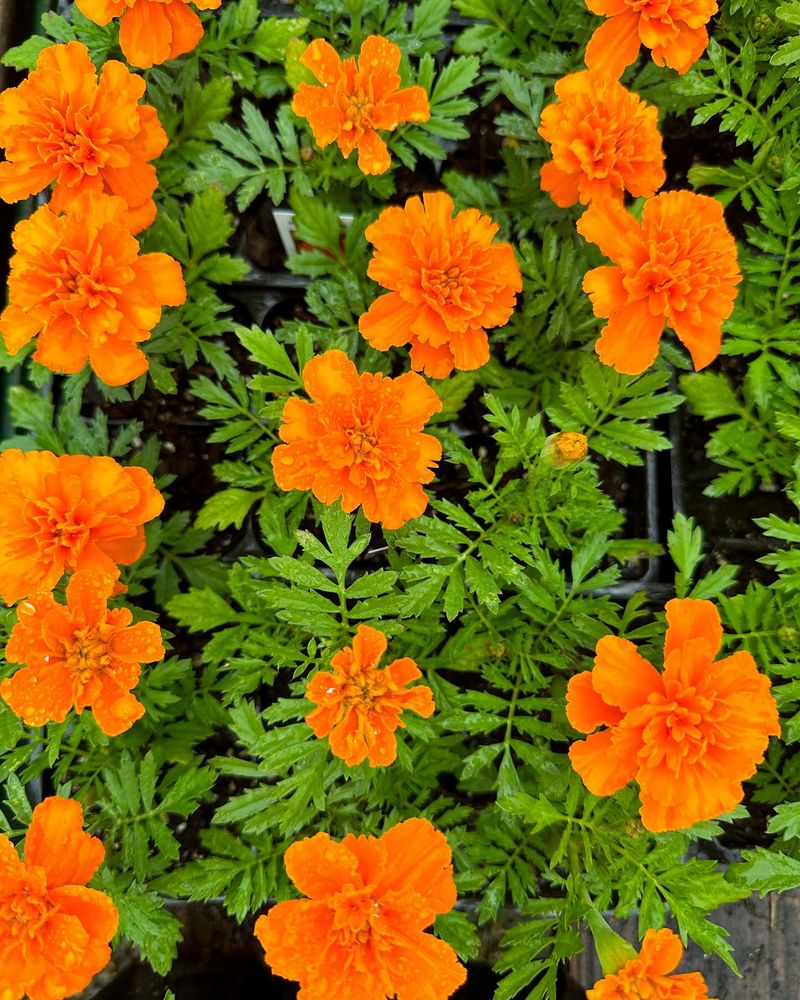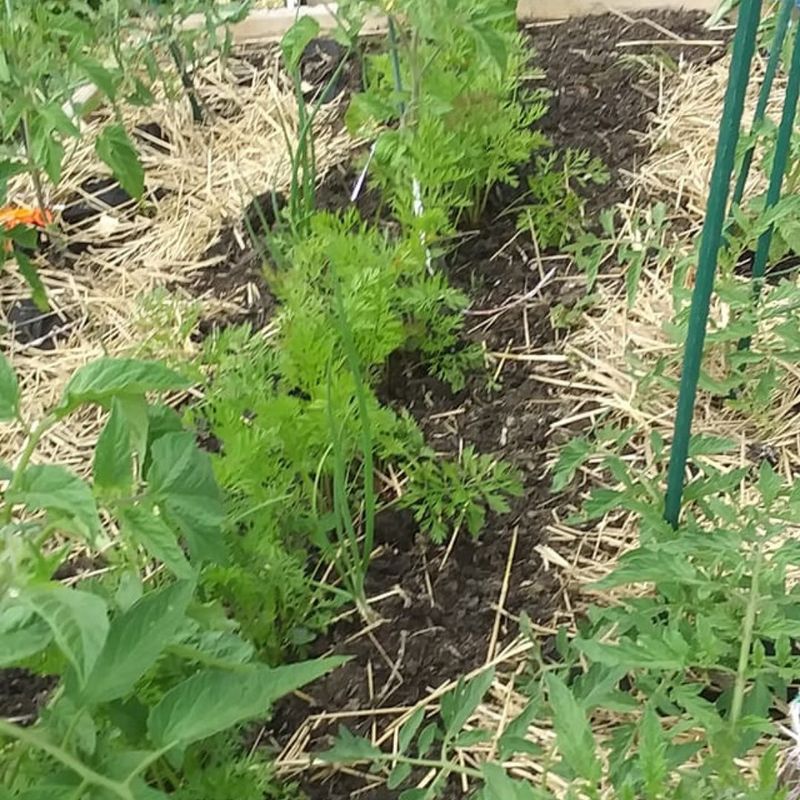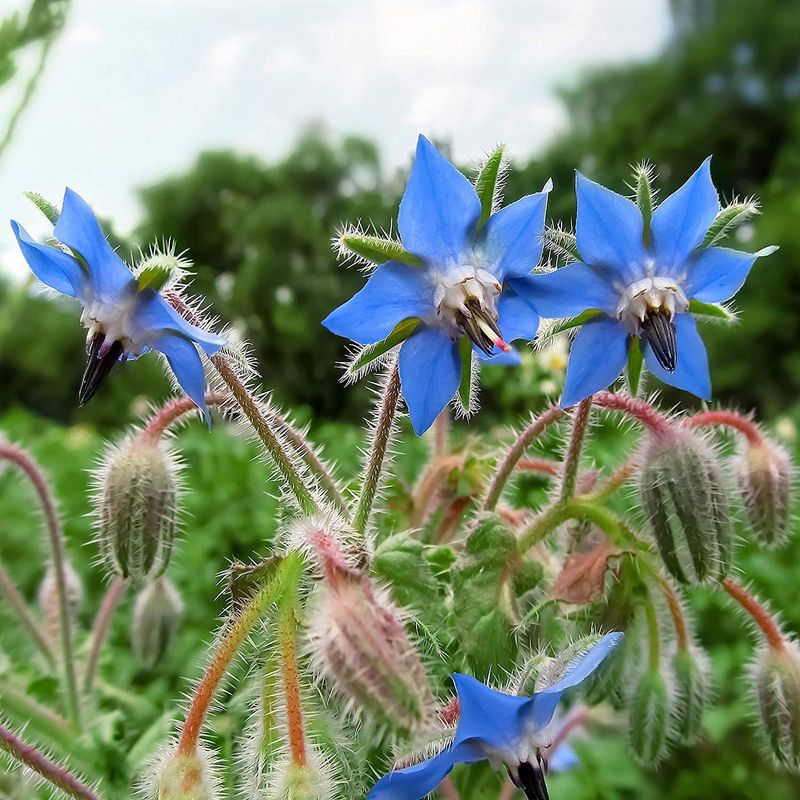I learned the hard way that not every plant plays nice with tomatoes. One summer, my poor tomato patch struggled, and it turns out their so-called “neighbors” were to blame.
Some plants compete, attract pests, or just stress them out. But swap them for the right companions, and suddenly your tomatoes are thriving.
Here’s what to keep far away—and what to plant instead for happy, healthy vines.
1. Potatoes
Cousins in the nightshade family, potatoes share many of the same diseases and pests as tomatoes. When planted together, they create a perfect storm for problems like early blight and potato blight to spread rapidly throughout your garden.
The underground tubers compete for the same nutrients your tomatoes need. Plus, both attract similar insects that can quickly multiply when these crops are neighbors. Keep these relatives at opposite ends of your garden to break the disease cycle.
2. Corn
Towering corn creates serious shade problems for sun-loving tomatoes. The tall stalks block precious sunlight that tomato plants desperately need for proper fruit development and ripening.
Both plants are also heavy feeders, competing intensely for the same nutrients in your soil. As if that weren’t enough, corn attracts tomato fruitworm (also called corn earworm), which happily travels between both crops causing double the damage. Keep these two garden favorites far apart.
3. Fennel
Fennel might look innocent with its feathery foliage, but it’s actually a garden bully. This herb releases chemicals into the soil that inhibit growth in nearby plants – a process called allelopathy. Your tomatoes will struggle to develop properly when fennel is nearby.
Many gardeners learn this lesson the hard way when their tomato plants mysteriously fail to thrive. Fennel is best grown in its own dedicated space, away from most vegetables. Even other herbs don’t appreciate fennel as a neighbor!
4. Walnuts
Walnut trees produce a toxic substance called juglone that’s particularly harmful to tomatoes. The chemical seeps from the tree’s roots, bark, leaves, and nuts into the surrounding soil, creating a dead zone for many plants.
Tomatoes exposed to juglone will wilt, yellow, and eventually die. The toxin can remain active in the soil even after the tree is removed. Keep tomatoes at least 50-80 feet away from walnut trees – the toxin spreads as far as the tree’s canopy extends plus a bit more.
5. Cabbage
Cabbage family members (including broccoli, cauliflower, and kale) stunt tomato growth when planted too close together. These heavy feeders compete for the same nutrients, leaving your tomatoes undernourished and producing fewer fruits.
Both plant families also attract different pests that can create a pest paradise when grown side-by-side. Cabbage moths might not directly attack tomatoes, but their increased presence in your garden creates more overall pest pressure. Give these crops plenty of space in your garden plan.
6. Eggplant
Another nightshade family relative, eggplants share too many similarities with tomatoes to make good neighbors. Both plants are vulnerable to the same diseases like verticillium wilt, early blight, and bacterial spot that can quickly spread between them.
They also attract identical pests such as flea beetles and hornworms. When planted together, you’re essentially creating a buffet for these garden troublemakers. Rotating nightshade crops and keeping them separated helps prevent disease buildup in your soil and reduces pest problems.
7. Dill (Mature)
Young dill actually benefits tomatoes, but once it matures and flowers, the relationship sours. Mature dill releases compounds that can inhibit tomato growth and reduce fruit production when planted too close together.
The timing matters tremendously with this herb-vegetable relationship. Plant dill early, harvest it young, or keep mature plants away from your tomato patch. Many gardeners make the mistake of thinking all herbs make good tomato companions, but dill proves that timing and plant maturity can change everything.
8. Peppers
Peppers might seem like natural tomato companions since they’re both summer crops, but this pairing invites trouble. As fellow nightshade family members, peppers and tomatoes share susceptibility to the same diseases like bacterial spot and tobacco mosaic virus.
They also attract identical pests, creating a concentrated feeding ground for tomato hornworms and aphids. When disease strikes one crop, it quickly jumps to the other. For healthier plants, separate these nightshade relatives in your garden rotation plan.
9. Kohlrabi
This unusual-looking brassica family member competes aggressively with tomatoes for the same soil nutrients. Kohlrabi’s shallow root system interferes with tomato roots, while both plants demand high nitrogen and similar minerals.
When planted too close, both crops suffer from nutrient deficiencies. Your tomatoes will show yellowing leaves and reduced fruit production. All brassicas (including kohlrabi) also prefer different soil conditions than tomatoes, making them incompatible garden neighbors despite what some companion planting charts suggest.
10. Sunflowers
Majestic sunflowers create serious shade problems for sun-loving tomatoes. Their impressive height blocks critical sunlight that tomato plants need for proper development and fruit production.
Sunflowers also release allelopathic compounds that can inhibit tomato growth. Their extensive root systems compete for water and nutrients, often winning this underground battle. While beautiful, keep these sunny giants at the north end of your garden where their shadows won’t affect your precious tomato crop.
11. Brussels Sprouts
Another brassica family member, Brussels sprouts make poor tomato neighbors for several reasons. They’re heavy feeders that compete with tomatoes for the same nutrients, often leaving both crops struggling to thrive.
These plants also attract different but equally destructive pests. When grown together, your garden becomes a pest buffet. Brussels sprouts prefer cooler temperatures while tomatoes love heat, meaning their care requirements clash significantly. Give these vegetables separate garden real estate for best results.
12. Cucumber
Cucumbers might seem like good tomato companions, but they invite trouble when planted too closely. Both plants are susceptible to similar fungal issues like powdery mildew that spread rapidly between them, especially in humid conditions.
Cucumber vines can also physically overwhelm tomato plants, crawling up and around them, blocking airflow and creating damp conditions perfect for disease development. Their growth habits simply don’t mesh well. If you must plant them near each other, provide ample spacing and good air circulation.
13. Apricot Trees
Apricot trees release substances that can suppress tomato growth when planted too closely together. The shade from these fruit trees also reduces the sunlight tomatoes need for proper development and fruit production.
Both plants can also share certain fungal diseases that easily spread between them during wet weather. The root systems compete for water and nutrients, with the tree’s extensive network usually winning. Keep tomatoes well away from the drip line of apricot trees for best results.
14. Strawberries
Strawberries and tomatoes both fall victim to the same soil-borne fungal diseases, particularly verticillium wilt. When planted together, they create a perfect environment for these pathogens to spread and persist in your garden soil.
Their watering needs also conflict – strawberries prefer consistent moisture while tomatoes do better with deep, less frequent watering. The different care requirements make it difficult to keep both plants happy in the same space. Separate these fruits in your garden planning.
15. Black Walnut
Black walnut trees are the absolute worst neighbors for tomatoes due to their production of juglone, a powerful plant toxin. The chemical is present in all parts of the tree – roots, bark, leaves, and nuts – and leaches into the surrounding soil.
Tomatoes are extremely sensitive to juglone and will quickly yellow, wilt, and die when exposed to it. The toxin can persist in soil for years, even after the tree is removed. Keep tomatoes at least 50-80 feet away from black walnut trees to avoid this garden heartbreak.
16. Basil
Aromatic basil makes a perfect tomato neighbor, repelling troublesome insects like tomato hornworms, mosquitoes, and flies. Many gardeners report that tomatoes grown with basil actually taste better – the herb seems to enhance the fruit’s flavor development.
Basil’s strong scent also confuses and deters pests that might otherwise attack your tomatoes. As a bonus, these plants thrive in the same growing conditions – warm temperatures, similar watering needs, and rich soil. Plant basil around your tomatoes for a mutually beneficial garden partnership.
17. Marigolds
Cheerful marigolds do double-duty as both garden decoration and tomato protectors. Their roots release compounds that repel harmful nematodes – microscopic worms that attack tomato roots and stunt plant growth.
The flowers also attract beneficial insects like ladybugs and hoverflies that feed on tomato pests. French marigold varieties work best for nematode control. Plant them as a border around your tomato patch or intersperse them between plants for maximum protection and a splash of bright color.
18. Nasturtiums
Vibrant nasturtiums function as a sacrificial trap crop for tomatoes. Aphids and certain beetles prefer nasturtiums over tomatoes, drawing these pests away from your precious fruits and onto the flowers instead.
These easy-growing flowers also attract beneficial pollinators to your garden while adding a splash of color. Their sprawling growth habit works well planted at the edges of tomato beds. As a bonus, both the flowers and leaves are edible with a peppery taste perfect for summer salads.
19. Carrots
Root-growing carrots make surprisingly good tomato companions. Their different growth habits mean they don’t compete for space – carrots grow down while tomatoes grow up, utilizing garden space efficiently.
Carrots also loosen soil as they grow, improving drainage around tomato roots. Tomatoes return the favor by providing partial shade that keeps carrot tops cooler in hot weather. This partnership works because carrots aren’t heavy feeders, so they don’t compete aggressively for nutrients like some other vegetables.
20. Borage
Blue-flowered borage attracts essential pollinators to your tomato patch while deterring destructive tomato hornworms. The herb also adds trace minerals to the soil that benefit tomatoes as it naturally mulches and decomposes.
Gardeners have long noticed that tomatoes grown near borage seem more resistant to disease and produce tastier fruits. This old-fashioned herb is easy to grow and self-seeds readily. The cucumber-flavored flowers are edible too, making borage a multi-purpose addition to your tomato beds.

